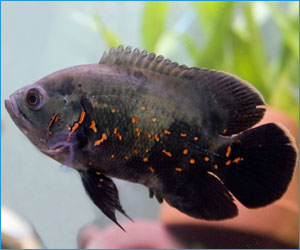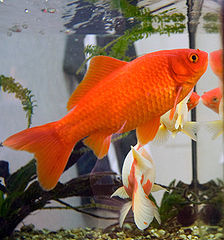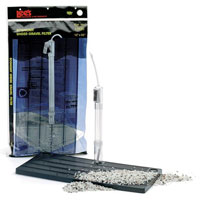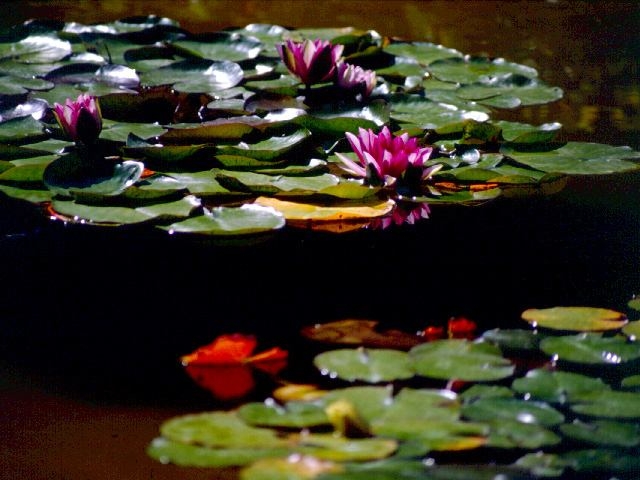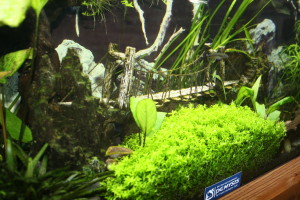In the attempt to make aquarium keeping easier, or simply be able to provide some sort of answer to common questions. There have been a number of “rules” or guidelines that have found their way into the hobby, that you may have heard repeated over the years. You may have heard them from other hobbyists, from your LFS, Web Forums and even in published books and magazines.
I want to focus on a few that I feel really need to go away, that were either bad information to begin with, or have become obsolete. These myths and misconceptions have a far greater potential to cause problems for the beginning aquarist, than they are to provide guidance for success.
The Inch Per Gallon Rule
How many fish can I put in my aquarium? This is the oldest question in fish keeping, the first person to put fish in an aquarium asked himself this question. People want a number, they need a number, why can’t you give me a number!!!! Somewhere along the line, born out of the need to provide an answer, the Inch per gallon rule was conceived, and I hate it.
Why do I hate it? Because not all fish are created equal, and not all aquariums are created equal. Six one inch guppies do not equal one six inch Oscar. Body type, temperament, compatibility, adult size, diet and many other things should be considered when choosing fish. Slender bodies fishes, deep bodied fishes, schooling fish, colder water fish, all have different space and habitat needs.
Tank shape is also important, and is completely ignored in most cases. A tanks surface area (footprint) has much to do with how many fish it can easily hold. Gas exchange only occurs at the water surface, and is where an aquariums dissolved oxygen and carbon dioxide levels are maintained with the atmosphere. A tall narrow column shaped aquarium, will have a smaller surface area than an aquarium that is short, wide and long. Two aquariums can be the same size in volume, but be very different in shape and surface area.
This is a case where I don’t like the simple answer. My advice to people is to try and do a little research into the fish they’re interested in, see what they will get along with, and how big they will be as adults. Make sure you have adequate filtration, and take a conservative approach to stocking, don’t add all the fish at once. Most importantly, test your water quality, especially if you plan on keeping your aquarium near its limit. If at any point you are having trouble keeping your aquarium chemistry stable, do not add more fish, you may already have too many.
Fish will only grow to the size of the aquarium
 This one really bugs me, and I still hear it stated as fact on a regular basis. This is simply just not true, some fish may grow slower in a small aquarium, or can be kept smaller by limiting food, but this is not way to treat your fish. Often used in conjunction with the inch per gallon rule, to try and justify putting more fish in a small aquarium, by ignoring the adult size of the fish, this myth needs stop being perpetuated. Most fish that reach a large adult size, and going to get quite large in the first 2 years, if your aquarium is too small, don’t buy the fish. There are better choices to be made!
This one really bugs me, and I still hear it stated as fact on a regular basis. This is simply just not true, some fish may grow slower in a small aquarium, or can be kept smaller by limiting food, but this is not way to treat your fish. Often used in conjunction with the inch per gallon rule, to try and justify putting more fish in a small aquarium, by ignoring the adult size of the fish, this myth needs stop being perpetuated. Most fish that reach a large adult size, and going to get quite large in the first 2 years, if your aquarium is too small, don’t buy the fish. There are better choices to be made!
Small fish tanks are better for beginners.
There are a plethora of small aquarium kits on the market, many of the marketed for children, or with the entry level aquarist in mind. Where this has the potential for problems is when people confuse affordability and ease of setup, with the reality of the needs of a small aquarium. The downside of the small aquarium is how quickly problems can arise, conditions can change, and frustration takes over. Some of the things that can cause serious problems in small tanks, are common mistakes made by the beginner. Over feeding, overstocking, poor tank placement, improper heater and risk of contamination are just a few things that can have rapid and unfortunate effects on a small aquarium. Not to say these things are good for larger aquariums, just that they affect larger aquariums more slowly, and allow you a chance to correct issues before the results are disastrous. Be sure to check out our aquarium beginners guide before buying.
The dos and don’ts of cycling your aquarium.
This one could be a topic for a long article all by itself, so I will just hit on a few of bits of bad information that gets passed around to the unsuspecting new aquarist. Again, this is another topic where some simple research will go a long way to understanding the nitrogen cycle, and what to expect in your new aquarium.
Let your aquarium sit for a month before you start adding fish.
This is false; an aquarium is no more ready for fish after a month, than it is after 24 hrs. Once you have the aquarium setup, filters running, and heated to the proper temperature, you can start to add fish right away. 24 hrs is usually sufficient for your new tank to stabilize. Start with just a small number of hardy fish to get your system started.
Using a bacteria supplement will instantly cycle your aquarium and allow you to fully stock your aquarium immediately.
Although many manufactures’ of these products make them out to be a magic bullet, I feel Bacterial supplements should be used to complement the natural cycling process, not replace it. Without supplementation cycling will take 4-6 weeks, this time can be significantly reduced using supplements, but ultimately what is going to provide a stable aquarium is its own biological filter, the bacteria that colonizes and grows in your filter, and on your gravel, rocks and decorations. In a Marine aquarium, starting your aquarium with good cured Liverock will start you with a strong foundation.
Don’t do water changes while your aquarium is cycling.
This is also false. While your aquarium is cycling, toxic ammonia and nitrite levels can occur while the beneficial bacteria that consumes these waste products establishes in your system. You can absolutely perform small water changes to keep levels low enough that you do not reach levels that are toxic to your starter fish. While it is true that the first bacteria to colonize your aquarium are free in the water, especially if you are using bacterial supplements, the vast majority of bacteria that forms your biological filter lives on solid surfaces. Removing water will not affect this bacteria, and will not greatly inhibit your aquariums cycling ability. If you are a couple weeks into cycling your new aquarium, you should not be afraid to do water changes to help manage the high Ammonia or Nitrite levels.
 That Fish Blog – Aquarium Advice and Information
That Fish Blog – Aquarium Advice and Information

